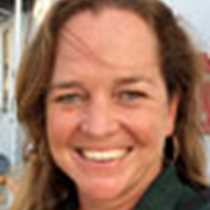We awoke this morning to beautifully clear skies and the sound of our vessel, the Sea Bird, locking through The Dalles Dam. This morning's activities involved exploring the beautifully designed Columbia Gorge Discovery Center and Wasco County museum, followed by a drive along the unique Columbia Gorge scenic highway. Whilst some of us traveled on to a restored section of the highway to admire views of the river, others stopped to admire the view from Rowena Point before descending back to Hood River.
The scenery from Rowena is amongst the most spectacular the Columbia Gorge has to offer. The ravages caused by the Bretz floods, as torrents containing ten times the volume of water of all the Earth's rivers rushed through the Columbia River canyon, are clearly seen in this area. These tore away at the lower slopes, and changed the cross-sectional profile across the valley from a "V-shape" to a "U-shape". In the area seen from Rowena Point, soil and talus were swept from the valley walls, leaving the series of clean steps we now see on the barren basaltic lava flows. The walls of the gorge were thus over-steepened and made susceptible to the many landslides that later devastated as much as 50 square miles of the gorge slopes. In this area, the river makes an abrupt turn to the north, and this change in the course of the floods caused the cliffs here to be undermined to such an extent that it caused a great landslide (visible in the picture), down which a portion of the scenic highway swings in a series of loops (the Rowena Loops).
Lewis and Clark camped just across the gorge from where we stood, along the banks of the Klickitat River (which they named the "Caterack River").




